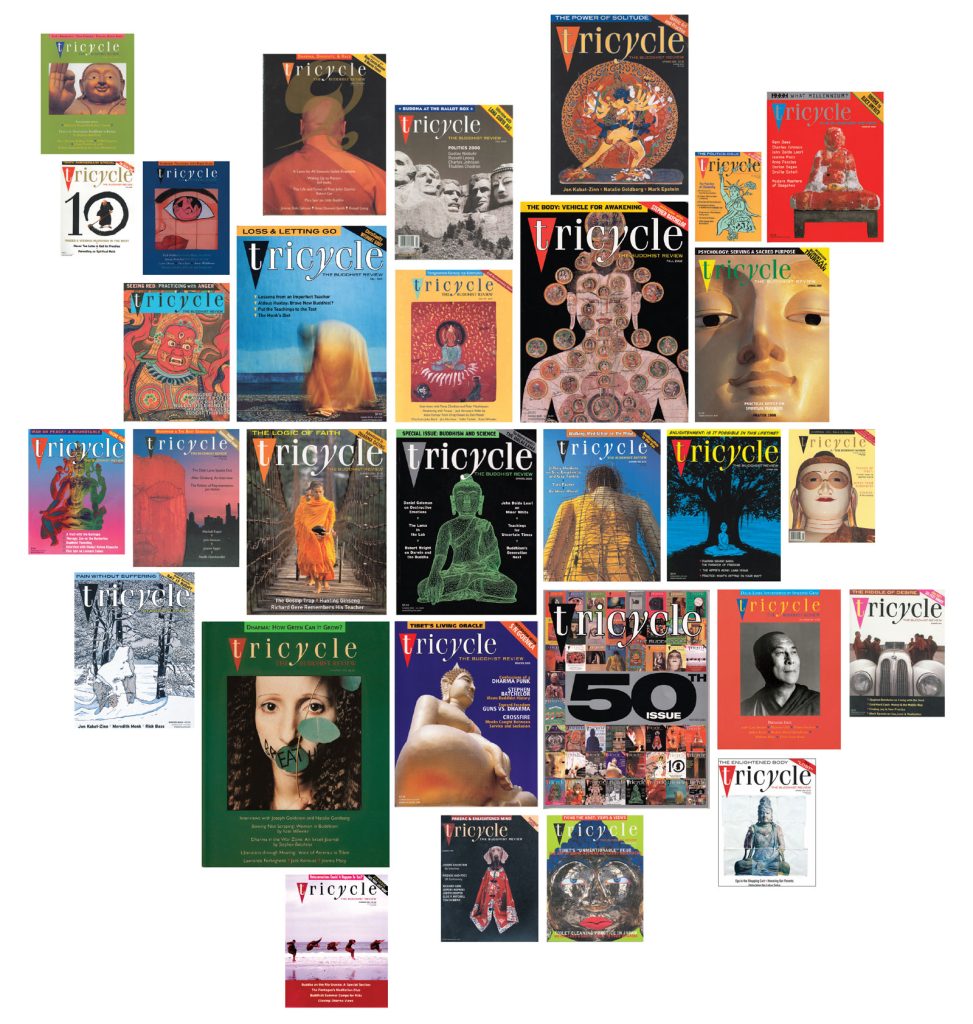It’s not uncommon for artists to remark that it was only years after completing a poem, say, or a musical composition or a sculpture, that they began to recognize fully what the thing was all about. Looking back over the first two decades of Tricycle, I think we can see something similar at work. Since the first issue appeared in the fall of 1991, we have been approaching a deeper understanding of what we can and should be doing—indeed, of what we are doing and have been doing through the years. But it has taken time for this purpose to become evident.
Our focus on Buddhist teachings and practices has been constant, as has our focus on their application in the cultures that have only recently adopted them. This will remain so. But it’s clear now that the underlying story all along has been the building of a community and culture, something larger than the sum of its parts—a context, a conversation. A more conscious effort to help build and deepen this context is an undertaking we welcome with enthusiasm.
We’ve selected the following 20 stories from the last 20 years with this emergent perspective in mind. These stories, which are available in our archives on tricycle.com, succinctly illustrate Tricycle’s evolution from a magazine-publishing initiative to a diverse and inclusive community of Buddhist practitioners around the globe.
—James Shaheen, Editor & Publisher
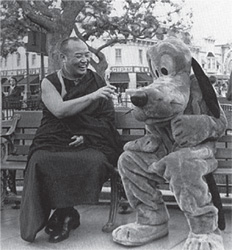
’91
“As painful as it has been, the unraveling of institutional Buddhism has resulted in a valuable re-examination of the place of Buddhist practice in American society. At the very least, such problems have cut through romantic projections and thrown American Buddhists back on their own meditation cushions.” —“The Changing of the Guards” by Rick Fields
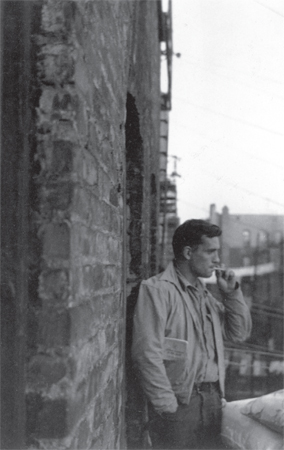
’92
“What Kerouac was discovering was not some strange Oriental notion alien to the Western mind. He was exploring the basis of mind itself as it’s known in the West as in the East, except that he saw the Buddhist formulations as being perhaps more sophisticated than the monotheistic formulation of the West.”—“Negative Capability” by Allen Ginsberg
’93
“Westerners attracted to Buddhism have been looking for ways to actualize its tenets in a culture that lacks a strong commitment to monasticism.”—“Meditation in Action” by Kenneth Kraft
’94
“Even when fellow students confess to me that they are not strangers to, say, back pain or bouts of suffocation on their cushions, it is inconceivable to me that their martyrdom approximates my own. Didn’t Roshi tell me once that with the exception of one other student (an obese, elderly fellow with very short legs, who once toppled off his cushion in a faint), I have the worst posture in the zendo?” —“Crawling Towards Sitting” by Larry Shainberg

’95 “Monastic life isn’t tough because you have to work hard all day long. It isn’t tough because you don’t have any time for yourself. It isn’t tough because there is no time to practice. It’s tough because there are no exits and you come up so close to yourself.” —“No Place to Hide” by Pema Chödrön
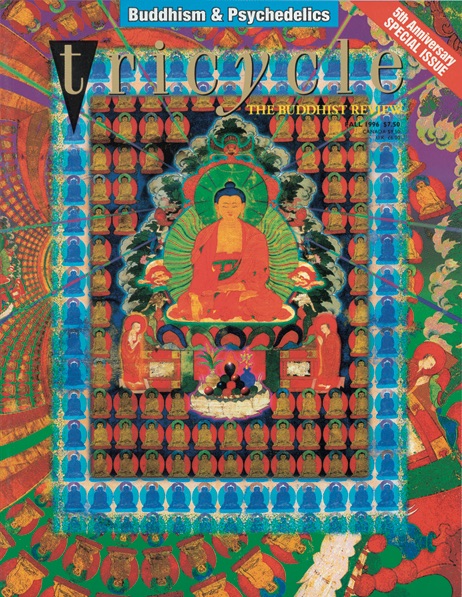
’96
From “Psychedelics and Buddhism: The Roundtable”
“I don’t see psychedelics as an enlightening vehicle, but I do see it as an awakening vehicle. I see them beginning a process that awakens you to the possibility.” —Ram Dass
“It’s really a different kind of mind that is cultivated in meditation, where the qualities of stability, and loving-kindness, and clarity, and humbleness are the primary qualities. Psychedelics don’t necessarily cultivate those qualities.” —Joan Halifax
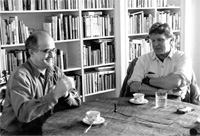
’97
Stephen Batchelor: I did believe very literally in rebirth when I was training as a Tibetan Buddhist monk. But I used to ask myself, if there were no rebirth, would I behave differently? And the answer is no. Rebirth was never actually a driving force. Is it for you?
Robert Thurman: Yeah, I’d act differently. I’d relax a lot I think! I would lose my focus as a completely unrepentant workaholic. The fact that there would be nothingness awaiting—that’s like negative nirvana. —“Reincarnation: A Debate” between Stephen Batchelor and Robert A. F. Thurman
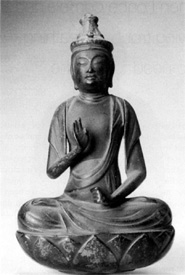
’98
“Concentration and mindfulness go hand in hand in the job of meditation. Mindfulness directs the power of concentration. Mindfulness is the manager of the operation. Concentration furnishes the power by which mindfulness can penetrate into the deepest level of mind. Their cooperation results in insight and understanding. These must be cultivated together in a balanced manner.” —“Mindfulness and Concentration” by Bhante Henepola Gunaratana
’99
“Though the number of black Buddhists is small, they are growing in an increasingly multi-cultural America with the promise of more black people turning the wheel of dharma as a new millennium dawns. For through the dharma, the black American quest for ‘freedom’ realizes its profoundest, truest, and most revolutionary meaning.” —“A Sangha by Another Name” by Charles Johnson
’00
“We’re not born Buddhists, so there must be something that we’re receiving for which we are grateful. Following the dharma forms is a choice. You do not have to be here. Our devotion is born of gratitude for what we receive, not from our parents and local society. And if we have appreciation, gratitude, and devotion of some kind, then we soften up a little bit. Our hearts have been touched and we have more room, more patience for things we don’t understand.”—“Old Wine, New Bottles,” an interview with Lama Surya Das
’01
“As these ancient traditions meet, pressing questions emerge. Is the melting pot approach simply creating a big mess? Or is something new emerging that will revitalize dharma practice for us all? How much of our spiritual practice and discipline is embedded in cultural overlays from the East that are neither relevant nor helpful to us in our Western society? And on the other hand, do we sometimes water down, or even leave behind, the essence of the teachings simply because they take us beyond our Western physical or psychological comfort zone? How much can we pare away or alter before we start missing the point of itall?”—“One Dharma” by Joseph Goldstein
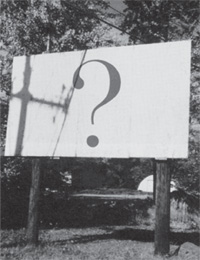 ’02
’02
“When we come across a concept that we find difficult to accept, the first thing we should do, especially if it’s something that is integral to the dharma, is to look into it with an unprejudiced mind. We should read everything we can on the subject, not just from the point of view of buddhadharma, but if there are other approaches to it, we need to read about them, too. We need to ask ourselves how they connect with other parts of the doctrine. We have to bring our intelligence into this.” —“Necessary Doubt” by Tenzin Palmo
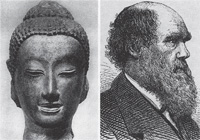 ’03
’03
“Evolution designed us to pursue self-interest and get our genes into the next generation. But it did not design us to be happy. In fact, happiness is something that is designed by natural selection to evaporate. It is designed not to last but to keep you motivated.” —“Darwin and the Buddha,” an interview with Robert Wright
’04
“When you simply ride with your impulses, you don’t understand their force. They’re like the currents below the surface of a river: only if you try to build a dam across the river will you detect those currents and appreciate how strong they are. So we have to look at what’s important in life, develop a strong sense of priorities, and be willing to say no to the currents that would lead to less worthwhile pleasures.”—“The Dignity of Restraint” by Thanissaro Bhikkhu
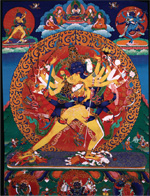 ’05
’05
“Buddhist art—and more specifically, tantric art— gives us the opportunity to come down to earth and look at how Buddhism represents itself visually. How is the Buddha represented? How are his teachings and followers represented?” —“Tantric Art: Maps of Enlightenment” by Jeff Watt
’06
“A life without gratitude is a joyless life.” —“The Gift of Gratitude” by Ajahn Sumedho
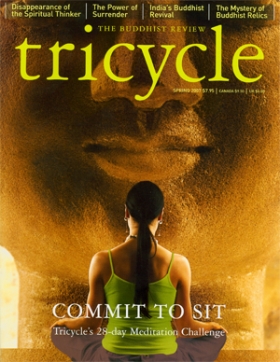
’07
Tricycle.com was launched in 1994, but it wasn’t until 2007, with “Commit to Sit,” a 28-day meditation challenge in print and online, that the “Tricycle Community”—a diverse and inclusive global movement—was born.
’08
“Like other spheres of human life, religion—the meaning-making sphere—is often subject to distortion and can become horribly destructive. But getting rid of it isn’t an option. Religion meets a human need, and if you get rid of it in one form, it will come back in another.”—“The R Word” by Robert Bellah
’09
“Each time a person says the nembutsu, it is unique in that moment, because the karmic constellation of that person’s life and of the whole universe is unique in each moment. There’s something fundamentally the same, which is the deepest reality, the highest truth, yet each saying of the nembutsu is unique to the time it is uttered.” —“The Buddha of Infinite Light and Life,” an interview with Taitetsu Unno and Mark Unno

’10
“All my work revolves around the same conversation: What is freedom beyond conditions? Beyond this school, this prison, this ’hood, whatever your conditions are. Do your conditions lead inevitably to suffering? No, they don’t. Only a being’s perspective leads to suffering. Two people in the exact same situation, according to their outlook and expectations, can have completely different experiences. Turn that around, and any conditions can be a vehicle for bondage—or freedom and awakening.” —“The Heartful Dodger” by Alix Sharkey

’11
“The discovery of a new member in the Buddhist canonical family has profound implications for practitioners. It settles the principal justification for long-standing sibling rivalries among Buddhist traditions, and it does so not by revealing a winner but by upending the cornerstone—a false paradigm of history—on which such rivalries are based.” —“Whose Buddhism Is Truest?” by Linda Heuman
Thank you for subscribing to Tricycle! As a nonprofit, we depend on readers like you to keep Buddhist teachings and practices widely available.
